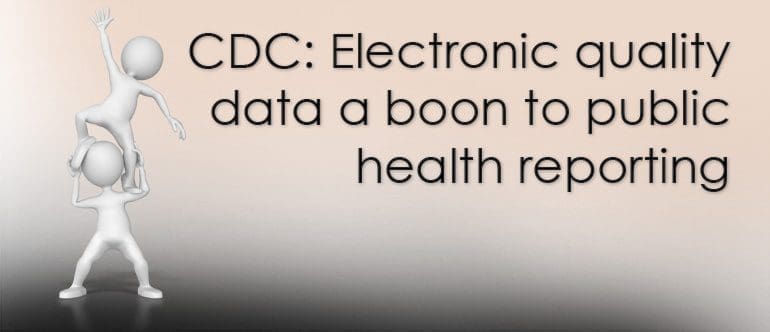Call us toll-free: 800-878-7828 — Monday - Friday — 8AM - 5PM EST

By Government Health IT Staff for Government Health IT
The use of electronic clinical quality measures (eCQM) for reporting data will be “invaluable” for monitoring numerous clinical conditions, according to research published in the Center for Disease Control and Prevention’s Morbidly and Mortality Weekly Report.
The report used eCQM data that was submitted by 63,000 health care providers to the Medicare Electronic Health Records (EHR) Incentive Program to be analyzed to assess progress in achieving blood pressure control among their patients with hypertension.
It found that 62 percent of patients with hypertension achieved controlled blood pressure throughout three reporting years of 2011-2013.
In addition, the use of of eCQMs were integrated with clinical performance goals of Million Hearts, a U.S. Department of Health and Human Services initiative that was launched in 2012 to prevent 1 million heart attacks and strokes by 2017. The report found that 36 percent of reporting providers met the Million Hearts’ clinical target of 70 percent or more of their patients with hypertension under control. This is first example of eCQM data being used to evaluate nationwide progress toward a public health improvement goal, the report said.
“Use of EHR data for public health surveillance could streamline reporting, facilitating more timely and possibly more complete data collection in key areas of public health,” the report said.
The report’s authors said the use of eCQMs showed promise for improving clinical data analysis and reporting, an important HHS goal.
“Incentive program CQMs are calculated by extracting structured data elements collected in the EHR at the point of care, a process that reduces the amount of data retrieval required for tracking progress,” according to the report. “In addition, alignment of CQMs across federal and private sector programs enables clinicians to collect data once and report to selected programs. This analysis demonstrates the potential for electronic CQM reporting to be used for monitoring population health.”
“Improving and enhancing eCQMs, and making sure that health IT can use data from a variety of sources, are key components of the federal health IT strategic plan, and the draft interoperability roadmap,” wrote Thomas A. Mason, MD, Chief Medical Officer at ONC , and Janet Wright, MD Executive Director, Million Hearts, respectively.
“We still have work to do,” they wrote in a Health IT Buzz blog post. “To continue to make progress to achieve this goal for more patients, we must work together to reach an interoperable health system that facilitates information exchange across the care continuum, and that enables care transformation.”
